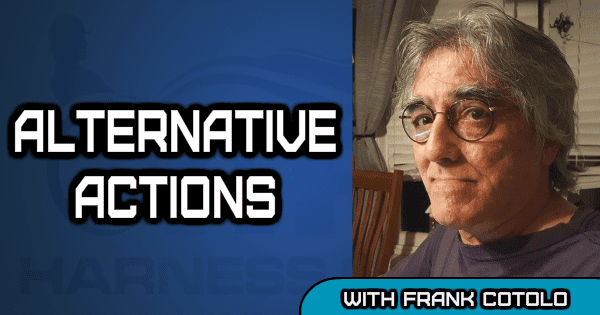Alternative Actions: Cultural anthropology fuels success for racetrack management
by Frank Cotolo
I am going to make another point about racetrack management initiating the “partner” goal, so read closely track administrators. For this presentation, however, I want to steer clear from the pari-mutuels and casino businesses and support the importance of the measure from an entirely different perspective.
The late cultural anthropologist, Margaret Mead, will support this particular analogy, based on my experience working with her.
Trust me and read on, please.
Let me set up the circumstances, since the very notion of Frank Cotolo working alongside (no less in the same room publicly) the respected academic researcher/author/speaker Margaret Mead is unmistakably absurd without explanation.
It was the late in the summer of 1976. I was living in Brooklyn, NY, going to a New York City college and working weekends as a musician. This gave me plenty of time between college semesters to wander the city on no particular mission. One afternoon I met someone who talked me into doing volunteer work for the Democratic Party. On the slim chance that I may learn something about presidential-election politics from the inside, as well as contribute to the Jimmy Carter campaign’s goal to beat President Ford, I agreed to do it.
The New York City Democratic Presidential Campaign Headquarters was located in a floor or two of an office building in midtown. It was a crowded, bustling atmosphere with ad-hoc offices strewn across the long floor, piles of campaign material here and there and volunteers like me, waiting for leadership.
The young man who lured me into this political machine turned out to be one of the top guys in the New York State campaign organization. We hit it off well, so he told me he would assign me to one of the major programs in the campaign. Though I knew I did not deserve such a position, I took it and was happy when I became a part of a vibrant program led by — you guessed it — renowned cultural anthropologist, Margaret Mead.
Ms. Mead was seventy-five years old in 1976. I had, of course, heard of her, but she was the last person on Earth I imagined meeting in my life, no less in the Presidential Campaign Headquarters. Of course I knew of her but I had no preconceptions. However, when we met I was shocked to discover she was not a boring member of academia, or a political hack. She was a delight and extremely sharp for a person in her seventies who had thrived from living in far away places so dim and dark that they didn’t offer post cards.
Stay with me, here.
All right, so what was the Margaret Mead program that I dare say supports the racetrack management partner revolution?
Ms. Mead represented a non-partisan program that would personally escort anyone to the polls as long as he or she was a registered voter, should they not have transportation or the physical ability to go on Election Day. Of course, I didn’t entirely understand why the Democratic Party would create a program and employ staff members to go out of their way to assure that people who may vote for a Republican as well as a Democrat would get to the polls.
Ms. Mead’s explanation was enlightening. Since there were more registered Democrats than Republicans in New York City, the program’s goal was to get as many Democrats (who the program’s research insisted would vote along party lines) as possible to the polls. It would not matter helping Republicans because there were not enough of them to win New York City and to win New York City would make it easier for Carter to capture the state’s electoral votes.
Ms. Mead was correct. Carter won the city and the city more than helped win the state. It wasn’t entirely due to Ms. Mead’s program, of course, but a slew of people would never have cast their ballots at all were it not for her program.
Your raceway doesn’t have to hire busses to assure new or old customers come to your track; then again, based on the customer research you should have, it shouldn’t be such a far-out possibility. Casinos do it all the time, adhering to their research that if the customers cannot come on their own, the casino will go out and get them.
Think of this, racetrack managers: being familiar with and available to help your audience, as well as build it, has nothing but positive affects. Offering your patrons benefits will make them “partners” because, as any cultural anthropologist will tell you, they are assured you act in their best interests and are not the villainous hierarchy of their racetrack community.
All of the ideas I bring to this column have to do with reaching out, doing extra work, giving things away to inspire success, therefore, survive in a market corroding quicker than you can say United States Football League.
More every month on the pari-mutuels partner revolution.
















